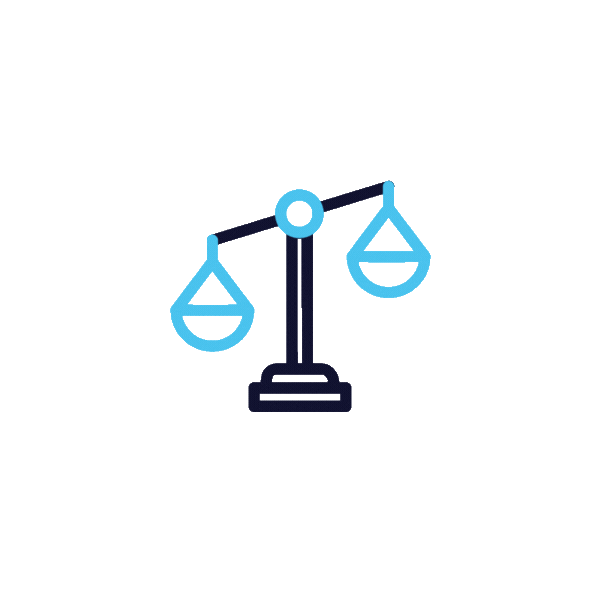
AI displacing humans in the workforce Belgium sectors

Could 35 percent of Belgian jobs be transformed by artificial intelligence by 2025? Recent studies from the European Commission indicate that transformation is already accelerating, with automation touching core operations in manufacturing, finance, logistics, and public services. For executives, the question is not whether artificial intelligence will change work, but how quickly to adapt operating models, reskill teams, and measure return on investment in a pragmatic way.
Belgium is recognized as a European leader in responsible AI adoption, making proactive planning all the more essential for company directors and HR professionals.
Consider a national financial institution that implemented large scale automation for customer operations. Intelligent assistants now handle a majority of routine inquiries, while new roles emerged in model oversight, risk, and quality assurance. The pattern is consistent across sectors: automation reduces repetitive work and, at the same time, creates demand for supervision, workflow engineering, and governance. That is the actual story behind artificial intelligence displacement: work is evolving and moving up the value chain.
The trajectory differs by industry. Antwerp’s logistics hubs are piloting autonomous yard operations and predictive scheduling, while hospitals adopt pre‑diagnostic imaging support and automated documentation. Jobs shift, not vanish. The organizations that succeed pair smart process automation with targeted reskilling and human-in-the-loop controls that build trust with employees and regulators.
Tip: Prioritize reskilling and transparent change communication to secure both results and employee trust across industries.
As Belgium positions itself as a European leader in responsible artificial intelligence adoption, it pays to read the map before accelerating. The sections below give a sector view, highlight tasks to automate versus augment, and outline a clear path from audit to deployment with the guardrails required by the European Union Artificial Intelligence Act.
Belgium’s 2025 outlook: AI and workforce displacement at a glance
Key signals and trends
According to Belgian workforce automation statistics, roughly four in ten tasks across Belgian industries show high automation potential by 2025. Manufacturing leads the pack with strong readiness for computer vision and quality control, followed by financial services where document processing, identity verification, and compliance checks are rapidly digitizing. Leaders should keep an eye on sector-level adoption, the evolving skills gap, the maturity of compliance practices, productivity baselines, and the pace at which employees transition into new roles.
Sectoral impact assessment
The implementation of intelligent automation varies widely across Belgian industries. Financial services report extensive automation in routine back‑office processes and customer operations, balanced with new positions for risk review and model stewardship. Operations directors typically stage adoption over three time horizons: quick wins such as document workflows and customer support in the first twelve months, advanced quality control and logistics optimization within two years, and selective decision support in strategic planning beyond that window.
Net effect analysis
Organizations that approach workforce transformation as a portfolio of changes see a familiar pattern: repetitive tasks reduce materially, human roles are augmented by decision support, and entirely new positions appear in ethics, data quality, and orchestration. The most telling signals are not only the percentage of automated work, but the directional metrics that prove business impact at scale, such as productivity gains, lower error rates, accelerated cycle times, and measurable cost optimization. Belgian teams that run formal readiness programs consistently report better outcomes in both the business case and social acceptance, because automation is introduced with governance, training, and transparent change communication built in from the start.

European Union Artificial Intelligence Act requires risk assessments and robust oversight at each deployment stage.
Sectors in Belgium most exposed to AI displacement
Manufacturing and logistics
Manufacturers moving toward smart factories report strong automation potential in quality inspection and repetitive assembly. Collaborative robots now assist operators on lines, while predictive maintenance and inventory optimization reduce unplanned downtime and stockouts. In logistics, data‑driven route planning and digital twins shorten lead times and improve capacity use across the network.
Key impact areas:
- Visual inspection automation
- Predictive maintenance
- Inventory optimization
- Route planning
- Safety monitoring
Financial services and insurance
Compliance and risk operations are shifting fast. Know Your Customer verification, transaction monitoring, and claims triage are now largely assisted by artificial intelligence while subject matter experts retain authority for decisions involving risk and exceptions. Fraud detection models improve pattern recognition and free analysts to focus on high value investigation. The result is shorter cycle times with auditability and human oversight preserved.
Retail and customer service
Retailers deploy automation for conversational assistance, returns processing, and promotion eligibility. Routing of customer inquiries is faster, service levels are more predictable, and pricing optimization adapts to margins in real time. Human teams step in for edge cases, empathetic interactions, and complex account support. Store operations also benefit from automated replenishment and back‑office document flows that have traditionally consumed hours per week.
Healthcare and life sciences
Hospitals and clinics are using medical assistance to prepare imaging for physician review, generate clinical notes, and coordinate appointments. This cuts administrative burden while keeping strict patient privacy and consent controls. In life sciences, research and regulatory teams rely on document parsing and literature screening to accelerate evidence review without compromising quality standards.
Critical applications span automated documentation, appointment scheduling, image pre‑screening, patient engagement, and revenue cycle optimization. The overall theme is consistent: clinicians keep decision authority while artificial intelligence reduces paperwork and surfaces insights faster.
Public sector administration
Government services are digitizing case intake, eligibility checks, and multilingual assistance for citizens. Processing times improve significantly when automation is paired with transparent rules and clear escalation paths to human agents. This is particularly relevant in municipalities where the volume of inquiries spikes seasonally and multilingual support is essential.
Marketing, sales, and HR
Commercial and human resources teams are adopting autonomous agents for lead qualification, content drafts, curriculum vitae screening, and onboarding assistance. Results often include faster response times and better candidate matching, provided that teams maintain human oversight and careful prompt design. If your sales leaders want practical time back, see how to get more time with sales AI to reallocate effort from manual research to direct customer work.
Successful organizations combine automation with reskilling and a clear governance model, so that workforce evolution happens with people, not to them. Transition pacing typically starts with basic automation in months, extends to deeper integration over one to one and a half years, and culminates in digitally orchestrated workflows by year three.

Tasks to automate vs augment vs newly created roles
High-priority automation tasks
Belgian organizations that introduce intelligent process automation report significant efficiency gains in routine, rules‑based work. The strongest return on investment appears in high volume, low judgment tasks with clear inputs and outputs.
Prime automation candidates:
- Document processing
- Data validation
- Report generation
- Email classification
- Invoice reconciliation
Augmented human decision-making
Decision support systems elevate analysts, lawyers, clinicians, and customer teams by accelerating research and surfacing relevant signals. Financial analysis, legal document review, clinical assessments, and risk evaluation benefit most when people remain in charge of judgment and the system explains recommendations. The practical effect is faster analysis with improved consistency, not the removal of expertise.
Emerging AI-era roles
As orchestration becomes a core discipline, new positions appear in ethics, workflow engineering, model risk, and data quality. Titles vary by organization, but common patterns include an Artificial Intelligence Ethics Officer, a Workflow Engineer responsible for connecting tools end‑to‑end, a Model Risk Manager, an Agent Supervisor who oversees autonomous agents in production, and a Data Quality Lead who ensures inputs remain trustworthy over time.
Did you know? Roles like AI Ethics Officer and Workflow Engineer are quickly becoming standard in Belgian enterprises adopting automation.
Implementation framework
Teams that follow a structured transformation approach outperform ad hoc projects. Assess task complexity, volume, and frequency. Quantify the impact of errors and define human oversight thresholds before deployment. Clarify compliance considerations early and perform dry‑run testing. Build training into the plan, from fundamentals to prompt design. For teams new to prompt‑driven workflows, this primer on how to write prompts for AI helps accelerate safe adoption and reduce avoidable errors.
Change management closes the loop. Start with a skills gap analysis and design modular training that employees can use on the job. Plan role transitions with clear responsibilities and reporting lines, monitor performance with shared dashboards, and create feedback channels that capture what is working and where additional guidance is required. Organizations that do this consistently earn higher acceptance and faster results.

Data and forecasts for Belgium: numbers leaders can use
Methodology and data sources
According to Belgian labor market statistics, employment dynamics differ by sector, which directly affects automation pacing and reskilling priorities. In broad terms, manufacturing shows high potential in machine‑assisted inspection and maintenance, while professional services present a more varied mix, from document automation to knowledge support. Reliable insights typically blend European Commission reports, Belgian employment surveys, sector association whitepapers, academic research, and anonymized company case studies.
Adoption outcomes also depend on readiness and regulation. Where data quality is strong and governance is established, workforce automation scales predictably. In sectors with tighter regulatory constraints, the path is still clear, but sequencing and documentation need more attention.
Sector-specific projections
Recent Belgian digital transformation analyses point to high automation potential in financial services and manufacturing, moderate to high potential in logistics, and steady but carefully supervised progress in healthcare and public services. These projections describe task exposure rather than job elimination. The organizations that allocate time for reskilling and maintain human‑in‑the‑loop controls are the ones that convert potential into measurable performance.
Implementation timelines
Teams that apply pragmatic adoption frameworks typically deliver quick wins in three to nine months. Document digitization, email automation, data entry reduction, and customer service assistance are common first steps. The next phase, over two to four years, integrates advanced analytics, complex decision support, and end‑to‑end process automation with governance systems and reskilling programs fully in place. A clear roadmap, visible stakeholder engagement, frequent progress checks, and adaptive training are what hold the plan together through changes in scope or technology.

Risk mitigation and reskilling strategies for Belgian companies
Task-level reskilling approach
A task‑centric training model works best. Instead of asking employees to switch careers overnight, break work into skill modules linked to real processes: artificial intelligence system supervision, data quality management, process optimization, digital workflow design, and risk assessment. Belgian organizations that run this way report stronger transition outcomes because training lands directly in the flow of work.
Internal mobility programs
Internal mobility bridges the gap between at‑risk roles and artificial intelligence‑augmented roles. Create structured pathways, publish transparent selection criteria, and provide mentoring for those moving into adjacent functions. When skills development is tied to a clear career progression, retention improves and employees see a future for themselves inside the company, not outside it.
Change management strategy
Keep communication open and regular. Share status updates on pilots and deployments. Use straightforward skills assessments and progress tracking, pair employees with mentors, and recognize improvements that matter to customers and regulators. Decision makers should track reskilling completion rates, internal mobility, employee satisfaction, productivity improvements, and knowledge retention. When these signals move together in the right direction, transformation is not only efficient but also sustainable.

Governance, ethics, and compliance under the EU AI act
Model and agent governance
Belgian organizations adopting artificial intelligence need governance that spans the entire lifecycle: intent, design, data, testing, deployment, and monitoring. The European Union Artificial Intelligence Act emphasizes risk classification, bias detection, performance monitoring, incident response, and audit documentation. Treat these as daily disciplines, not one‑time checklists.
Compliance and documentation
Strong documentation accelerates regulatory alignment. Prepare validation reports, maintain training data lineage, log performance metrics and incidents, and keep complete audit trails. Human oversight protocols must be explicit in design decisions and operational playbooks. This is how leaders keep pace with automation without compromising accountability.
Stakeholder engagement
Engage works councils and employee representatives early. Share impact assessments, hold regular consultation meetings, co‑design guardrails, and incorporate feedback into implementation plans. Organizations that invest in transparent collaboration report higher acceptance and fewer surprises during rollout.
Risk management framework
Define a clear risk framework that links model risk to business risk. Establish thresholds for automated actions, confidence scores for recommendations, and escalation routes to human reviewers. Monitor issues fast and fix them faster. When governance becomes routine, both compliance and performance improve.

From audit to deployment: a practical AI transformation roadmap
Comprehensive AI audit
Begin with a comprehensive audit to locate real bottlenecks and estimate impact. Examine process friction, data readiness, technology gaps, current skills, and operational risks. Quantify where automation will shorten cycles, reduce errors, or unlock capacity. The audit should conclude with a prioritized plan that links opportunities to business goals and measurable outcomes.
Process evaluation and planning
Evaluate processes at department level to focus on high return areas. Map current workflows, note handoffs and systems, and decide where artificial intelligence agents will work with existing tools like customer relationship management platforms, enterprise resource planning, and communication suites. Translate findings into a plan that balances quick wins with foundational changes needed for scale.
Workflow engineering
Design integrated workflows. Connect customer relationship management, enterprise resource planning, communication tools, document systems, and analytics platforms through application programming interfaces. An application programming interface first architecture makes it possible to scale, swap components as technology evolves, and preserve vendor independence. This is how teams turn prototypes into reliable operations.
Autonomous agent deployment
Deploy agents for sales, support, marketing, and human resources with clear scope and guardrails. Define success measures and handoff rules to human supervisors. Roll out in stages, starting with contained use cases such as lead qualification or first response in service, then expand scope once quality assurance scores and service level adherence stabilize.
Monitoring and optimization
After go‑live, treat monitoring as a product. Track service level adherence, quality assurance, cost efficiency, model performance, and resource use. Schedule weekly reviews for operational metrics, monthly optimization sessions, and quarterly strategy checkpoints. Continuous improvement is not an optional step, it is the operating model for artificial intelligence in production.

Measuring ROI and maintaining performance over time
Key performance indicators
Belgian organizations that invest in disciplined performance tracking consistently achieve stronger return on investment. Success means measuring both operational signals and financial impact. Focus on processing time reduction, error rate improvement, customer satisfaction scores, revenue impact, and cost efficiency gains. These metrics connect directly to value creation and help teams decide where to scale or refine.
Essential key performance indicators:
- Processing time reduction
- Error rate improvement
- Customer satisfaction scores
- Revenue impact metrics
- Cost efficiency gains
Performance baseline and targets
Set a baseline before pilots start. Document current cycle times, quality levels, and satisfaction scores so improvements are visible and credible. Define realistic targets for the first two quarters. As confidence grows, expand scope incrementally and revisit targets with evidence in hand. This prevents overpromising and builds trust with stakeholders.
Continuous improvement strategy
Use structured experimentation, error analysis, user feedback, and ongoing model optimization. Rotate team members through reviews so expertise spreads and insights from frontline users surface quickly. Artificial intelligence programs that treat learning as a habit, not a phase, deliver better outcomes and stay aligned to business goals when conditions change.
Governance and review process
Design a governance rhythm that fits your operating cadence. Weekly operational checks, monthly optimization reviews, quarterly strategy sessions, and annual audits create a reliable backbone. Real‑time monitoring dashboards add early warnings and trend analysis to prevent drift and keep performance within agreed limits.

Build, buy, or partner: choosing the right model
Capability assessment
Start with a clear assessment of technical infrastructure, skills availability, integration readiness, governance maturity, and compliance requirements. The goal is to decide what to build internally, which components to buy, and where a specialized partner will speed up results without locking you in.
Architecture and interoperability
Favor a modular architecture that connects to your existing customer relationship management, enterprise resource planning, communication tools, analytics dashboards, and documentation systems. Interoperability protects your investment and lets you adapt when a better model or dataset becomes available.
Partnership strategy
When plans are ambitious or timelines are tight, a partner can accelerate deployment and mitigate risk. The right partner brings implementation know‑how, governance expertise, and a structured knowledge transfer approach so your teams become self‑sufficient over time. If collaboration is strategic for your organization, a formal partner program can also align incentives and provide stable continuity across phases.
Decision framework
Make the decision with explicit criteria. Consider time to market, internal capacity, integration complexity, compliance obligations, and strategic importance. A transparent framework improves alignment between business, technology, compliance, and human resources, and avoids costly course corrections later.
In short, Belgium’s artificial intelligence opportunity is not a binary choice between people and machines. It is a design challenge that rewards thoughtful planning, strong governance, and measurable outcomes. The organizations that combine smart process automation with reskilling, interoperable architecture, and predictive optimization dashboards build an advantage that compounds over time.
Ready to move from pilot to production with confidence? Explore our AI consultant services to scope, govern, and deliver measurable results.
Accelerate your AI transformation in Belgium
Let our experts design, audit, and deliver responsible AI deployments tailored for your sector. Discover our end-to-end consulting programs—all 100% compliant with EU AI Act requirements.
FAQ
Which jobs in Belgium are most at risk from AI in 2025?
Roles with routine tasks face the highest exposure. Quality control in manufacturing, logistics planning, and financial processing are frequently augmented first. However, most positions evolve through augmentation and oversight rather than disappearing entirely.
How fast will AI displacement happen across Belgian sectors?
Pacing varies by sector and readiness. Quick wins in back‑office workflows typically land in three to nine months, while complex operational changes that require integration and governance take two to four years to embed fully.
What tasks should Belgian small and medium sized enterprises automate first?
Start with high‑volume, repetitive work that has clear return on investment: document processing, customer inquiry routing, data entry reduction, and recurring report generation. These areas show fast payback and low implementation risk.
How do we align AI programs with Belgian works councils and unions?
Engage early. Share impact assessments, agree on clear metrics for employee outcomes, set joint oversight committees, and publish escalation paths. When governance is co‑designed, adoption accelerates and trust increases.
What key performance indicators prove return on investment of intelligent automation?
Track processing speed, error rates, customer satisfaction, employee productivity, compliance accuracy, and measurable revenue impact. Combine operational and financial signals to get a full picture of value created.
How does the European Union Artificial Intelligence Act affect deployment timelines?
Expect additional documentation and controls. Plan for longer deployment windows to complete risk classification, validation, data protection assessments, and human oversight design. The result is slower at first, but safer at scale.
What are best practices for data privacy with AI agents?
Adopt data minimization, personally identifiable information masking, role‑based access controls, encryption, and complete audit trails. Run regular privacy impact assessments and train teams on responsible use of data.
Should we build in-house or partner with an AI engineering team?
Choose based on capability and urgency. If time to market and compliance are critical, a partner speeds delivery and reduces risk while your team learns by doing. If capabilities are mature and scope is narrow, building can work well.
How do we reskill teams without disrupting operations?
Use modular learning paths and on‑the‑job practice. Pilot in small cohorts, rotate mentors, and measure impact on productivity. Belgian organizations running structured reskilling typically maintain high operational continuity during transition.
Share this article
Share this article on your social networks


